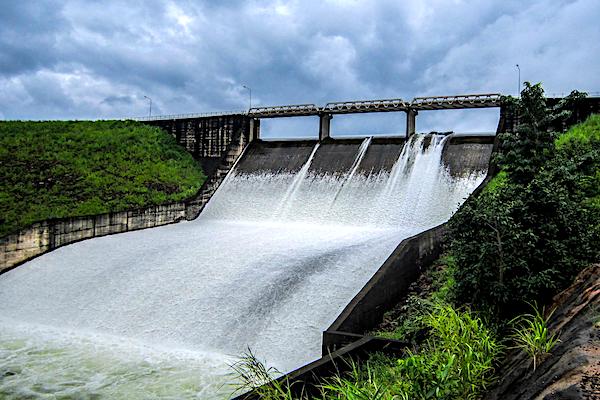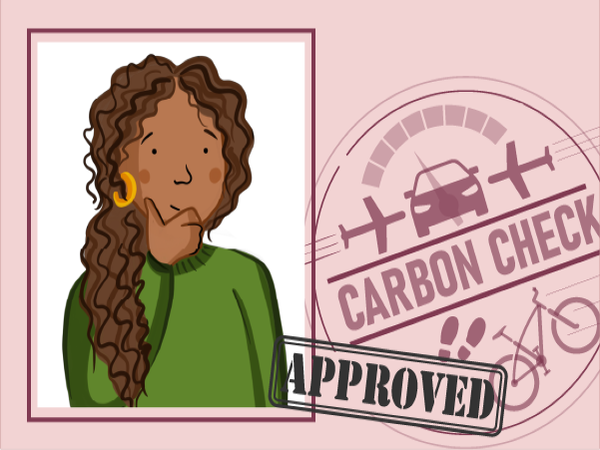You are viewing 1 of your 3 free articles for this month.
Solutions to drought and flood in Southern Africa
All Southern African countries are well-suited to renewables, especially solar power, with multi-financed projects looking to capitalise on this.
Nature-based solutions can reduce climate change impact on drought, such as hydropower.

Southern Africa suffers the harsh effects of climate change, such as droughts and floods. With the exception of South Africa, these countries have barely contributed to the climate crisis – an injustice throughout most of Africa.
Energy supply is a major issue. South Africa, the most populous and wealthiest country in Southern Africa, is under pressure to move away from coal.
The region is still recovering from a history of colonialism and apartheid, which have created great gulfs in equality. For sustainable development to be a reality, these gaps between the rich and poor must shrink, and policies must benefit the most underserved sections of societies as well as the most powerful.
Climate change: Droughts and floods
One of the biggest challenges facing the Southern African region is climate change, which means more frequent and severe weather events.
In March 2019, Cyclone Idai hit the shores of Mozambique, causing devastation there as well as in Malawi and Zimbabwe. Just six weeks later, Cyclone Kenneth swept in – the first time in recorded history that two strong tropical cyclones hit the region in the same season. More than 600 people died and 2.5 million people needed aid.
Water is already scarce in Southern Africa and longer, more extreme droughts will exacerbate that, affecting health and food security. In the Western Cape of South Africa, which has a Mediterranean-like climate, a lack of rainfall led to the so-called ‘Day Zero’ crisis of 2018, where Cape Town looked set to run out of water due to its reliance on dams. Desalination plants would mitigate future water crises in the area, but they are expensive.
Southern African countries must prepare for a future with harsher, more dangerous weather events, including floods and droughts. In April 2022, the South African province of KwaZulu-Natal was hit by extreme flooding that caused the deaths of more than 400 people.

Many experts claimed the damage and losses could have been lessened if it wasn’t for poor infrastructure, such as lack of drainage and the number of informal settlements where homes were easily swept away by flood waters.
The need for clean, reliable energy
In South Africa, energy supply is a hot topic. Since 2007, the country’s main energy utility, Eskom, has been scheduling rolling blackouts – known locally as loadshedding – to keep up with rising electricity demands, affecting everything from businesses to personal safety.
The vast majority of South Africa’s energy comes from coal – it’s one of the world’s worst polluters – and efforts to decarbonise have so far been slow. At COP26, South Africa was promised $8.5bn (£6.8bn) from a number of countries, including the US, Germany, France and the UK, as well as the EU, to assist in the transition from coal. However, the funds are yet to be allocated.
Eskom also exports electricity to seven countries in the region. One of these is Namibia, which still only supplies half the electricity required for its population of 2.5 million. Around 64% of Namibian electricity is generated by hydropower and the country is primed for other renewables, especially solar and wind.
64% of Namibian electricity is generated by hydropower, while 28% comes from fossil fuels
Though unlikely to serve its own energy needs, the government has recently authorised several new oil developments, both onshore and offshore, to the frustration of environmentalists.
For most of Southern Africa, solar is a good sustainable investment opportunity – and that potential is slowly being realised.
The multi-stakeholder Mega Solar initiative is the largest solar power programme in the region. It will first focus on projects in Botswana and Namibia, creating 300-500 megawatts of power that can be sold to neighbouring countries.

Waste management problems
Waste management is a major problem across Southern Africa, with most collected rubbish heading for landfill sites and too little of it recycled. In Mozambique, around 98-99% of collected waste is dropped at uncontrolled dumpsites, leading to emissions of 1.5 million tonnes of carbon dioxide equivalent each year. Scientists have also demonstrated how open-air waste burning leads to greenhouse gas emissions and impacts public health.
Many countries, such as South Africa and Mozambique, have struggled to keep up with their growing populations, with poorer areas afforded the least development attention. Underserved areas often lack access to kerbside collection, waste services and recycling facilities, so refuse gets dumped around communities and in waterways.
Throughout the region, recycling is often run through the informal sector – unpaid waste pickers sort through rubbish and sell what they can to recycling plants. In South Africa, there is no nationwide recycling programme, so waste is not usually divided at home.
It is estimated that waste pickers save municipalities up to R749m (£38m) in landfill space at no cost. Experts have called for informal industry waste pickers to be included in future waste management strategies, whilst improving their conditions and providing payment for their services.
Many Southern African countries have policies to reduce plastic waste. Namibia taxes the use of single-use plastic bags, while Malawi banned thin plastics in 2019.
On a larger scale, ambitious co-financed operations work to overhaul entire waste management systems. By eventually creating a circular economy in Mozambique, the NAMA Support Project aims to reduce emissions by 500,000 tonnes of carbon dioxide equivalent in 2024, and 2.8 million tonnes by the end of 2030.
Land degradation and biodiversity
Many people in Southern Africa depend on rural land for agriculture and wildlife tourism. But factors including erosion, deforestation and poor farming methods have degraded environments across the whole region.
Restoring land isn’t a quick fix and there isn’t a silver-bullet solution. Instead, each piece of land must be considered in its own right, bearing in mind the needs and rights of communities and the environment.
In countries such as South Africa, land use issues are intertwined with those of historic injustices and the redistribution of land taken during periods of colonialism and apartheid.
Simply removing agricultural practices to let the land recover may impact food security, another matter of concern in Southern Africa. A focus on regenerative agriculture is likely to be more sustainable in viable farming areas.
One regional success story is that of Gorongosa National Park in Mozambique, which formed a frontline of the civil war from 1977 to 1992. Projects to restore the war-torn park and uplift the surrounding communities began in the mid-1990s.
Today, wildlife populations have recovered, with some species reintroduced. Sustainable farming projects (coffee, honey and cashew) have been established around the park borders. And it’s hoped new safari properties opening in 2022 will boost eco-tourism.
Check it out
Learn more about the issues
- International Energy Authority country profiles, such as Namibia
- USAID Mega Solar project
- Nordic Development Fund Mozambique waste project
- South Africa’s National Waste Management Strategy
- Scientific study on single-use plastic policies in Southern Africa
- Land degradation in South Africa: Justice and climate change in tension – British Ecological Society
Activate employees
Find out how OckiPro membership engages employees to deliver sustainability impact.
Get Involved
There are many ways to get involved with Ocki and its community. To find out more, click the button below



